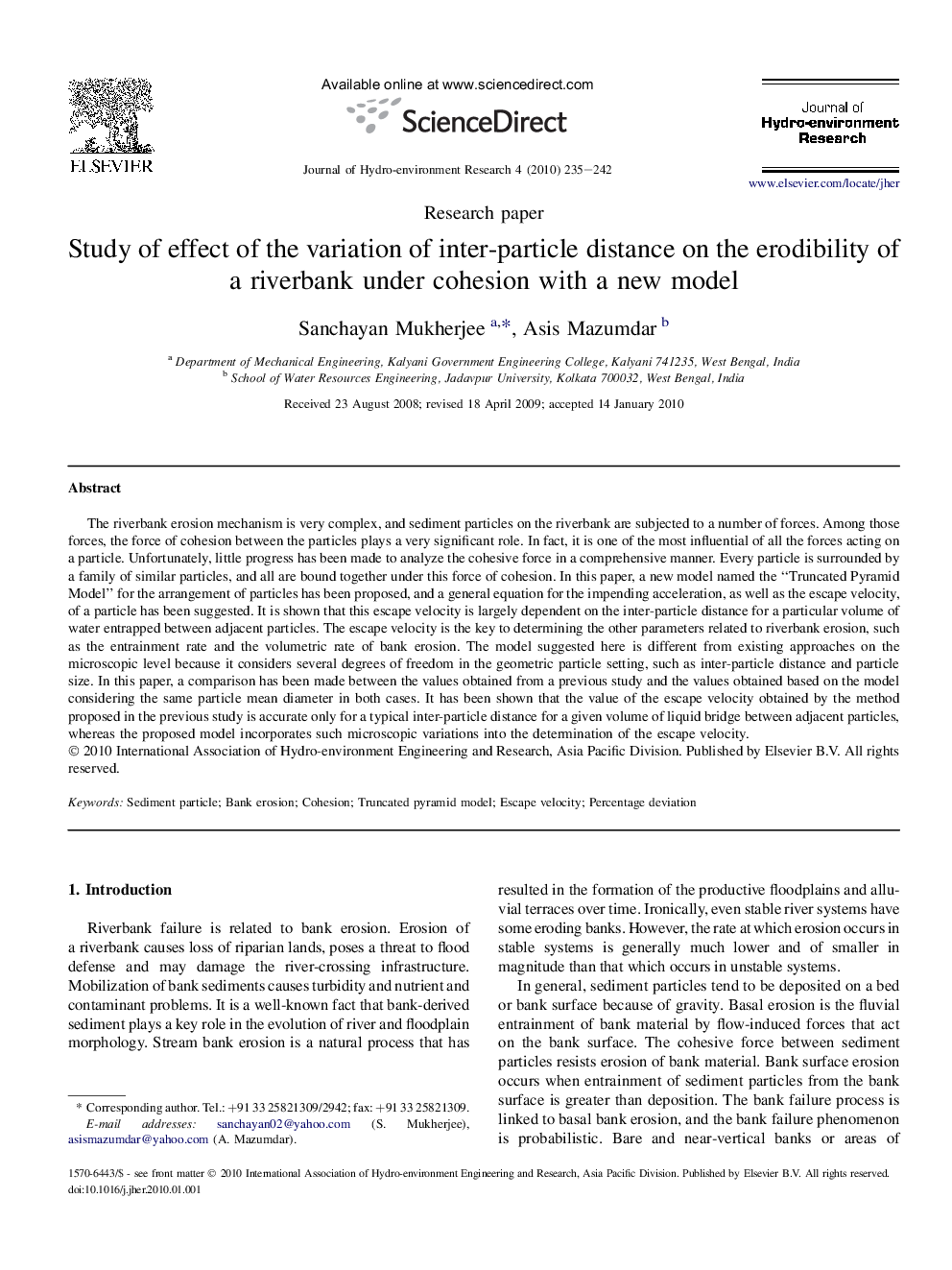| Article ID | Journal | Published Year | Pages | File Type |
|---|---|---|---|---|
| 4493763 | Journal of Hydro-environment Research | 2010 | 8 Pages |
Abstract
The riverbank erosion mechanism is very complex, and sediment particles on the riverbank are subjected to a number of forces. Among those forces, the force of cohesion between the particles plays a very significant role. In fact, it is one of the most influential of all the forces acting on a particle. Unfortunately, little progress has been made to analyze the cohesive force in a comprehensive manner. Every particle is surrounded by a family of similar particles, and all are bound together under this force of cohesion. In this paper, a new model named the “Truncated Pyramid Model” for the arrangement of particles has been proposed, and a general equation for the impending acceleration, as well as the escape velocity, of a particle has been suggested. It is shown that this escape velocity is largely dependent on the inter-particle distance for a particular volume of water entrapped between adjacent particles. The escape velocity is the key to determining the other parameters related to riverbank erosion, such as the entrainment rate and the volumetric rate of bank erosion. The model suggested here is different from existing approaches on the microscopic level because it considers several degrees of freedom in the geometric particle setting, such as inter-particle distance and particle size. In this paper, a comparison has been made between the values obtained from a previous study and the values obtained based on the model considering the same particle mean diameter in both cases. It has been shown that the value of the escape velocity obtained by the method proposed in the previous study is accurate only for a typical inter-particle distance for a given volume of liquid bridge between adjacent particles, whereas the proposed model incorporates such microscopic variations into the determination of the escape velocity.
Keywords
Related Topics
Life Sciences
Agricultural and Biological Sciences
Agricultural and Biological Sciences (General)
Authors
Sanchayan Mukherjee, Asis Mazumdar,
